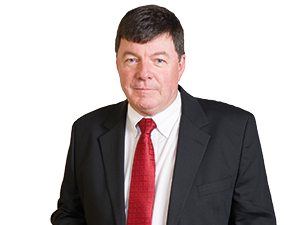
[miningmx.com] – HARMONY Gold battled through trying times in its 2014 financial year halving its net loss, but eventually unable to turn back the tide of the lower gold price which forced the curtailment of the Phakisa expansion at cost of R1.31bn.
The outcome was a full-year R1.27bn net loss (2013: – R2.35bn) to which the R130m write-down of its investment in Rand Refinery and some R274m in restructuring costs were contributing factors.
“It was a tough year on the production front, but we increased output,” said Graham Briggs, CEO of Harmony Gold in a conference call. Production came in just over 1,000kg higher at 36,453kg (1.17 million ounces) for the year.
“There was a nice improvement in sustaining costs (18% in dollars terms) and an increase in the average underground grade. Our capital expenditure is on target,” Briggs said.
The average grade for the 2014 financial year was 5% higher at 4.77g/t which Briggs said could be improved further in the current financial year to 4.8g/t, especially as the Doornkop mine came back into full production.
He acknowledged, however, that further restructuring was possible, the likelihood of which is perhaps present in Briggs’ uncharacteristically downbeat production forecast of some 1.2 million oz for the 2015 financial year.
“I have been accused of over-promising and under-delivering: 1.2 million oz is not much more than did this year, but some operations could do better,” Briggs said.
“We’ve been conservative. We will focus alot on costs, and it will be another challenge to beat inflation which will be a big focus. We are planning not to undershoot,” he said.
Some R130m has been set aside for rationalisation with some of Harmony’s smaller contributors to total gold production – such as its Masimong and Target 3 operations in the Free State – described by Briggs as “… sailing close to the wind”.
Briggs said Target 3 – which contributed 1,413 kg (45,429 oz) in the 2014 financial year – required “quite a lot of investment”. It had not been developed by the previous owner and would require “a lot of capital”.
The outlook for the group’s larger operations, including its Doornkop mine which has now recovered from an underground fire that took the lives of nine miners on February 9, was better, said Briggs.
Alwyn Pretorius, Harmony COO, said the group was unable to categorically explain the fire, although a seismic event may have caused the wooden support packs to set alight in the affected level. “It is hard to see how it originated as couldn’t get into old area. All the support was burned out,” he said.
Over and above these factors, Harmony’s rand gold price was 5% lower year-on-year falling to R432,165/kg against which it recorded a narrow 4% improvement its all-in sustaining costs to R413,433/kg. The current rand gold price is R444,610/kg.
UBS calculated that about half of Harmony’s production was underwater at the current gold price. It was also concerned about its financing ability. “We remain concerned that operating cash flow has not been sufficient to cover its capital expenditure requirements,” it said.
The impact of a difficult year was reflected in net debt which more than doubled to just over R1bn. Borrowings increased R322m to R2,86bn as the company drew-down on a $60m facility. The group pulled in capital expenditure 30% to R2.53bn.
Understandably, there was no sign of the dividend Harmony suggested earlier in the year was the goal.
“The aim is to be profitable and to pay dividends,” said Briggs in response to questions following a group presentation in May. “The plan is intact to pay dividends but I can’t quantify it as it will be a discussion with the board,” he said at the time.
Shares in Harmony are 12% lower on a 12-months basis which compares to a 28% decline in the value of Gold Fields and a 38% positive return in AngloGold Ashanti.
A feasibility study into the development of the group’s Wafi-Golpu project in Papua New Guinea would be delivered a month later than expected in September. “We will go through gating process to see if got anything wrong,” said Briggs.
“We have partners there [Newcrest Mining] and have to co-ordinate with what we’re doing. But we are very optimistic,” he said.
Harmony also said it was seeking to buy in new ounces from open cast and bulk mining opportunities in Africa.
Said Briggs: “When we look around world of gold mining, we see a lot of gold mining companies have got a lot of financial stress and debt. They need to repay that debt either by issuing equity or selling assets.
“There are quite a few on the block so will look at them. We think we are efficient miners, so we think can turn something to account other people are struggling with”. The group was not interested in buying platinum assets that may be sold by South Africa’s Anglo American Platinum, Lonmin or Impala Platinum.
Goldman Sachs said in a morning note the results were “neutral overall” but added that Harmony’s production and cost forecasts were disappointing.
“We expect the stock to trade down on today’s announcement given the company has not laid any medium term growth plans,” it said.








